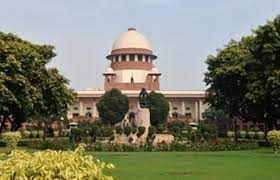UPSC Daily Current Affairs- 18th February 2023 | Current Affairs & Hindu Analysis: Daily, Weekly & Monthly PDF Download
GS-I
What is Yakshagana?

Why in News?
The Prime Minister of India has expressed deep grief over the demise of noted Yakshagana playback singer, Shri Balipa Narayana Bhagawatha.
About Yakshagana:
- Yakshagana is a traditional folk dance form popular in Coastal Karnataka
- It is a rare combination of dance, music, song, scholarly dialogues and colourful costumes.
- Traditionally, men portray all roles, including the female ones, though women are now part of Yakshagana troupes.
- A typical troupe consists of 15 to 20 actors and a Bhagawatha, who is the master of ceremonies and the main storyteller.
What are the elements of Yakshagana?
- The Act: Each performance typically focuses on a small sub-story (known as ‘Prasanga’) from ancient Hindu epics of Ramayana or Mahabharata. The show consists of both stage performances by talented artists and commentary (performed by the lead singer or Bhagawatha) accompanied by traditional music.
- The Music:Musical instruments used in Yakshagana include Chande (drums), Harmonium, Maddale, Taala (mini metal clappers) and flute among others.
- The Dress: Costumes used in Yakshagana are very unique and elaborate. Large size headgear, coloured faces, elaborate costumes all over the body and musical beads on the legs (Gejje).
Source: The Hindu
What are Geomagnetic Storms?
Why in News?
Recently, a Geomagnetic Storm was caused by a solar wind that passed through a gap created in the Earth’s magnetic field.
About Geomagnetic Storms:
- A geomagnetic storm is a major disturbance of Earth's magnetosphere.
- These storms result from variations in the solar wind that produces significant changes in the currents, plasmas, and fields in Earth’s magnetosphere.
- The solar wind conditions that are effective for creating geomagnetic storms are sustained (for several hours) periods of the high-speed solar wind and a southward-directed solar wind magnetic field (opposite the direction of Earth’s field) at the dayside of the magnetosphere.
- The largest such storms are associated with solar coronal mass ejections (CMEs), where a billion tons or so of plasma from the sun, with its embedded magnetic field, arrives at Earth.
- Effects:
- These storms can heat the ionosphere, causing beautiful auroras on Earth.
- Because the ionosphere is heated and distorted during storms, long-range radio communication that relies on sub-ionospheric reflection gets affected.
- Ionospheric expansion due to these storms can increase satellite drag and make their orbits difficult to control.
- Satellite electronics can be damaged through the build-up and discharge of static-electric charges.
- It can disrupt global navigation systems.
- It can create harmful geomagnetic-induced currents (GICs) in the power grid and pipelines.
What is a Solar wind?
- It is a stream of energized, charged particles, primarily electrons and protons, flowing outward from the Sun through the solar system at speeds as high as 900 km/s and a temperature of 1 million degrees (Celsius).
- It is made of plasma.
- When the solar wind reaches Earth, it sends a flurry of charged particles toward the magnetosphere, along Earth's magnetic field lines, towards the poles.
What are Coronal Mass Ejections (CMEs)?
- CMEs are large expulsions of plasma and magnetic field from the Sun’s corona that propagates outward into interplanetary space.
- The blast of a CME carries about a billion tons of material out from the Sun at very high speeds of hundreds of kilometers per second.
Source: Indian Express
GS-II
What is Munich Security Conference?

Why in News?
The article is about the controversy surrounding billionaire philanthropist and political activist George Soros and his alleged statements on India and the Indian PM at the Munich Security Conference.
Who is George Soros?
George Soros, the 92 YO billionaire philanthropist and political activist, has been at the center of several controversies over the years.
Some of the key controversies associated with Soros include:
- Currency manipulation: Soros became famous in the 1990s for his role in the “Black Wednesday” financial crisis in the UK, where he was accused of profiting from the devaluation of the pound sterling by short-selling it.
- Insider trading: Soros has also been accused of insider trading in several instances, including the case of the French bank Societe Generale.
- Political meddling: Soros has been accused of using his vast wealth to influence political campaigns and events around the world, including in countries like Hungary, Ukraine, and the United States.
- Anti-Semitic accusations: Soros has been the subject of numerous conspiracy theories and accusations of anti-Semitism, with some critics alleging that he is part of a secret globalist agenda to control world governments and economies.
About Munich Security Conference (MSC)
- The MSC was founded by a German official and publisher Ewald-Heinrich von Kleist at the peak of the Cold War (1947-1991).
- Starting in 1963, the conference initially only focused on military issues and was mainly attended by western countries and their high-profile officials, who “came together to display a united front in their struggle with Soviet communism”.
- After the end of the Cold War, the conference expanded its agenda that went beyond defense and security matters to include issues such as climate change and migration.
- It also started to invite leaders from eastern nations, including Russia, India and China.
What will be the focus of this year’s MSC?
- This year’s edition might entail a refocus on its goal- the security order in Europe, in the backdrop of the Russia-Ukraine war that began just days after the MSC 2022 was concluded.
- The conference might also serve as a platform for diffusing tensions between the United States and China, especially after the former shot down an alleged spy balloon.
- Another theme on the agenda is to focus on diverse perspectives from the Global South, which included some of the poorest and least industrialized countries in the world.
Source: Indian Express
Supreme Court says NO to Sealed Cover suggestions

Why in News?
The Supreme Court has said it did not want to accept in a “sealed cover” the Centre’s suggestions on who could be the members of a committee the court had proposed to assess the market regulatory framework and recommend measures, if any, to strengthen it in the wake of the Adani-Hindenburg affair.
What is the news?
- The article is about a public interest petition filed in the Supreme Court that calls for the establishment of an expert panel to strengthen regulatory mechanisms related to the Adani Group.
- The petitioners argue that the Adani Group has been able to bypass regulatory hurdles through its influence on government officials and agencies.
What is Sealed Cover Jurisprudence?
- It is a practice used by the Supreme Court and sometimes lower courts, of asking for or accepting information from government agencies in sealed envelopes that can only be accessed by judges.
- A specific law does not define the doctrine of sealed cover.
- The Supreme Court derives its power to use it from Rule 7 of order XIII of the Supreme Court Rules and Section 123 of the Indian Evidence Act of 1872.
Need for sealed cover jurisprudence
There are several reasons why sealed cover jurisprudence is used-
- National security: For example, in cases involving sensitive information related to defense or intelligence agencies, the disclosure of such information in open court proceedings could compromise national security.
- Individual privacy: It is also used to protect the privacy in cases involving sensitive personal information. In such cases, the court may allow the submission of such information in a sealed cover to protect the privacy of the individual concerned.
- Protect commercial or trade secrets: In cases involving disputes between companies, the disclosure of confidential information related to their business operations could harm their commercial interests.
Nature of the power: Upholding Secrecy
- If the Chief Justice or court directs certain information to be kept under sealed cover or considers it of confidential nature, no party would be allowed access to the contents of such information.
- There is an exception to this if the Chief Justice himself orders that the opposite party be allowed to access it.
- It also mentions that information can be kept confidential if its publication is not considered to be in the interest of the public.
- As for the Evidence Act, official unpublished documents relating to state affairs are protected and a public officer cannot be compelled to disclose such documents.
Grounds of such secrecy
Other instances where information may be sought in secrecy or confidence is when its publication:
- Impedes an ongoing investigation of cases related to national security
- Details that are part of the police’s case diary or
- Breaches the privacy of an individual
Prominent cases of sealed jurisprudence
Sealed cover jurisprudence has been frequently employed by courts in the recent past.
- Rafale Deal
- In the case pertaining to the controversial Rafale fighter jet deal, a Bench headed by CJI Ranjan Gogoi in 2018, had asked the Centre to submit details related to deal’s decision making and pricing in a sealed cover.
- This was done as the Centre had contended that such details were subject to the Official Secrets Act and Secrecy clauses in the deal.
- Bhima Koregaon Case
- In the Bhima Koregaon case, in which activists were arrested under the Unlawful Activities Prevention Act.
- The Supreme Court had relied on information submitted by the Maharashtra police in a sealed cover.
Issues with such jurisprudence
- Undermines open justice: This practice appears to be unfavorable to the principles of transparency and accountability of the Indian justice system.
- Erodes public faith: It stands in contrast to the idea of an open court, where decisions can be subjected to public scrutiny.
- Increases arbitrariness: It is also said to enlarge the scope for arbitrariness in court decisions, as judges are supposed to lay down the reasoning for their decisions.
- Unfair trials: Besides, it is argued that not providing access to such documents to the accused parties obstructs their passage to a fair trial and adjudication.
Way forward
- Conduct an independent and thorough investigation: Inquire into the allegations raised in the petition, and take appropriate legal action against the Adani Group if they are found to have violated environmental regulations.
- Establish an expert panel as suggested by the petitioners: To review the regulatory framework and suggest measures to strengthen it. The panel should include experts from various fields, including environmental science, law, and economics.
- Ensure transparency and accountability in the regulatory process: Foster a culture of environmental awareness and responsibility among businesses by promoting sustainable and eco-friendly practices. This could involve providing incentives and support to companies that adopt such practices.
- Review the use of sealed cover jurisprudence: Ensure that it is used judiciously and only in cases where it is necessary to protect sensitive or confidential information.
Source: Indian Express
GS-III
Indian Pangolin

Why in News?
International non-profit organization TRAFFIC recently reported that 1,203 pangolins had been found in illegal wildlife trade in India from 2018 to 2022.
Key facts about Indian Pangolin:
- The Indian pangolin, also called thick-tailed pangolin and scaly anteater is native to the Indian subcontinent.
- It is one of the eight species of pangolins found.
- They are one of the most trafficked mammals in the world, despite an international ban on their trade.
- Scientific name: Manis crassicaudata
- Distribution: It lives in India (south of the Himalayas), Bangladesh, Southern Nepal, Sri Lanka, and small parts of Pakistan.
- Habitat: It occurs in tropical forests, open land, grasslands, and degraded habitat, including in close proximity to villages.
- Features:
- Like other pangolins, it has large, overlapping scales on its body, which act as armor.
- The Indian pangolin’s armor is amongst the most effective in the mammalian world. It has about 13 rows of moveable sharp scales covering its body, which are shed periodically.
- The colour of its scales varies depending on the colour of the earth in its surroundings.
- It can also curl itself into a ball as self-defense against predators.
- It is an insectivore feeding on ants and termites.
- It is nocturnal and rests in deep burrows during the day.
- Conservation status:
- IUCN Red List: Endangered
- Wildlife (Protection) Act, 1972: Schedule I
- CITES: Appendix I
Source: The Hindu
An Overview : UAPA and The Concerns

Why in News?
India’s anti-terror law, the Unlawful Activities (Prevention) Act (UAPA), has been misused and turned into a tool of terror. There are two examples of this misuse in recent times. In 2021, Muhammad Manan Dar, a young Kashmiri photojournalist, was arrested and imprisoned for documenting the daily lives of common Kashmiris with his camera. A year earlier, another journalist, Sidheeque Kappan, was charged with participating in a plot to ignite rioting in Hathras, Uttar Pradesh.
Unlawful (Activities) Prevention Act (UAPA)
- Background: The Unlawful Activities (Prevention) Act is an anti-terrorism law in India that was first introduced in 1967.
- Purpose: The purpose of UAPA is to prevent unlawful activities that threaten the sovereignty and integrity of India.
- Amendments: UAPA has undergone several revisions since its introduction, with each revision making the law more stringent. Till 2004, “unlawful” activities referred to actions related to secession and cession of territory. Following the 2004 amendment, terrorist act was added to the list of offences.
- Provisions: UAPA provides for the designation of individuals and organizations as “terrorists” and allows for their arrest and detention without trial for up to 180 days.
- Criticisms: UAPA has been criticized for being used to stifle dissent and suppress political opposition. Critics argue that the law is vague and overbroad, allowing for its misuse and abuse.
What is Terrorist and Disruptive Activities (Prevention) Act (TADA)?
- Overview: TADA was an anti-terrorism law in India and enacted in 1985 and was in force until 1995. It was enacted to strengthen the legal framework to deal with terrorist activities in India.
- Provisions: TADA provided for the detention of suspects without trial for up to 180 days. It also allowed the setting up of special courts to conduct trials in cases related to terrorism and provided for the admissibility of confession made to a police officer. TADA also made certain activities punishable as terrorist acts, including illegal arms trade, financing terrorism, and disrupting the sovereignty of India.
- Criticism: TADA was also criticized for its vague and broad definition of terrorism, which allowed for the targeting of political dissidents.
- Repeal: TADA was allowed to lapse in 1995 after it was deemed to be incompatible with the Indian Constitution and the principles of democracy and the rule of law. The law was replaced with the Prevention of Terrorism Act (POTA) in 2002, which was also criticized for its draconian provisions and misuse by law enforcement agencies.
What is Prevention of Terrorism Act 2004 (POTA)?
- Objective: To provide the government with legal tools to combat terrorism and punish those who support or engage in terrorist activities.
- Key Provisions: Broad powers to investigate and prosecute individuals suspected of terrorism-related activities. Power to detain suspects for up to 180 days without charge. Use of confessions made to police officers as evidence in court
- Criticism: Potential for misuse and infringement on civil liberties. Could be used to target religious and ethnic minorities. Could be used to silence political dissent
- Repealed: 2004 by the United Progressive Alliance government, citing concerns about misuse and potential for human rights abuses.
- Replacement: Some provisions of POTA were incorporated into the Unlawful Activities Prevention Act (UAPA), which remains in force in India today.
Worrying statistics
- UAPA has one of the worst records for prosecution success.
- According to a PUCL report in 2022, less than 3 per cent of arrests made under the UAPA resulted in convictions between 2015 and 2020.
- Only 1,080 of the 4,690 people detained under the UAPA between 2018 and 2020 received bail, according to the report.
- Unlike TADA and POTA, UAPA has never been constitutionally reviewed. Its repeated abuse is a blot on our democracy.
Some of the key concerns regarding the UAPA
- Misuse: The UAPA has been criticized for being misused by authorities to target human rights defenders, activists, and dissenters. Critics argue that the act has been used to stifle free speech and to quell any form of peaceful protests.
- Lack of accountability: The UAPA allows for the designation of an individual or organization as a terrorist entity, without providing adequate means for challenge or appeal, which many argue is against the principles of natural justice.
- Vagueness: The definitions of “terrorist acts” under the UAPA are broad and vague, and can be interpreted in a way that infringes on the freedom of speech and assembly, leading to the potential for misuse.
- Restrictions on bail: The UAPA has provisions that make it difficult for people charged under the act to obtain bail, as it requires that the accused show that they are not guilty, shifting the burden of proof from the prosecution to the accused.
- Excessive punishment: The UAPA provides for harsh punishments, including life imprisonment and the death penalty, for offenses related to terrorism, which many argue are disproportionate and infringe on human rights.
Why UAPA is necessary?
- Legal tools to investigate: The UAPA provides the government with legal tools to investigate and prosecute individuals and organizations involved in terrorist activities.
- Special courts to conduct trials: It allows for the setting up of special courts to conduct trials in cases related to terrorism and provides for stringent punishment for offenses related to terrorism. It also allows the government to designate individuals or organizations as terrorist entities and freeze their assets.
- Necessary measure to maintain sovereignty and integrity: The act is aimed at countering not just terrorism but also other forms of unlawful activities, such as organized crime, money laundering, and trafficking. It is considered to be a necessary measure to maintain the sovereignty and integrity of the nation, and to protect the lives and property of its citizens.
- To balance national security and civil liberties: It is necessary to strike a balance between national security and protection of civil liberties. The act can be an effective tool in the fight against terrorism, as long as it is implemented in a fair and just manner and its provisions are not misused to stifle legitimate forms of dissent or activism.
Conclusion
Concerns over the UAPA highlight the need for a balanced approach in the fight against terrorism, one that protects national security while also ensuring the protection of fundamental rights and freedoms.
Source: The Hindu
What is the ‘Vayulink’ Platform?
Why in News?
Indian Air Force (IAF) recently developed an indigenous ‘Vayulink’ platform to enable jammer-proof communication with the base station.
About ‘Vayulink’ Platform:
- Vayulink is an ad-hoc data link communication system that would help pilots deal with bad weather and provide jammer-proof uninterrupted communication with the base station.
- It is developed by the Indian Air Force (IAF).
- It uses the Indian Regional Navigation Satellite System (IRNSS) to send radio communication to the base station when the signals are low.
- Vayulink, when installed in an aircraft, gives the position of other aircraft close by and encrypted traffic data over a secure channel.
- Uses:
- The platform helps to prevent fratricide or friendly fire, i.e., it helps us to know where the friendly forces are present.
- It provides better combat teaming.
- Helps plan real-time basis where multiple teams can get together and go towards the target coming from different areas.
- It can also give the pilots data on the weather.
Source: PIB
Shinku La tunnel

Why in News?
The Union Cabinet recently gave its nod for the construction of the Shinku La tunnel to provide all-weather connectivity to the border areas of Ladakh.
About Shinku La tunnel:
- It will be constructed at an altitude of over 16,500 feet on the Nimu-Padam-Darcha road link on the border between Ladakh and Himachal Pradesh.
- The length of the tunnel will be 4.1 km.
- The Border Roads Organization (BRO) will construct the tunnel at a cost of Rs. 1,681.5 crores.
- The traffic movement in the tunnel will not be vulnerable to long-range artillery shelling or missile firings either by China or Pakistan.
- Purpose:
- To provide all-weather connectivity to the border areas of Ladakh.
- To enable swift movement of troops and heavy weaponry to forward areas.
Source: The Hindu
|
38 videos|5293 docs|1118 tests
|


















